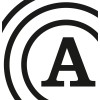Accusound workshop on Harp Amplification.
Firstly let’s start by defining what we or I mean by amplification.
Amplification is the increasing of the sound level not just making the noise level higher.
This means you need to increase the level of all the sound, i.e. full frequency range and you must increase
it linearly, i.e. without distortion, in level or frequency.
Amplification is the combination of sound collection, sound processing, amplification and replay; each
section being equally important. As with most instruments the creation of the sound is complex; in the
case of the harp a combination of the strings, the body of the instrument and the environment in which it
is being played.
For live applications the best place to capture this sound is directly off the soundboard. (further discussion
on this can be found in the full pdf available above). The soundboard holds all the musical notes and a
great deal of the character of the instrument. The Accusound harp contact microphone attached closely to
the soundboard and picks up the vibrations of the instrument and translates them into electrical energy.
The Accusound contact strip has the advantage over a standard microphone for harps in that it maintains
the character of the instrument but greatly reduces the chances of feedback (unpleasant howling sound
often heard in poor amplification setups). Being fixed to the inside of the instrument, it is always in the
correct position no matter how you move the instrument.
Once you have captured the sound energy as an electrical signal you have the ability to manipulate this
signal, if you so desire, using the vast range of special effects pedal available on the market. Effects such
as distortion, flange, reverberation or perhaps more useful effects such as looping where you can play a
section of music and have it continuously played back as a second musical part. (more can be read about
this else where on this website).
Perhaps the more important and simplest processing would be tone, bass and treble, adjustment or
reverberation. Simple tone adjustment will allow you to adjust the amount of bass or treble to compensate
for the room acoustics. The addition of a little reverberation can give your playing a little extra warmth
and a bigger sound which can allow the sound to carry further and sound warmer.
The simple processing mentioned so far are normally available as part of any good amplifier. In addition
many amplifiers have provision to take the signal out of the main amplifier and pass it through external
effects or processors. (Further discussion of this can be found elsewhere on this website)
The final link in the amplification system is the loudspeaker. This will normally be built in to the
amplifier. The full system or box is often referred to as a Combo amplifier, combination of amplifier and
loudspeaker. It is important that an acoustic combo amplifier is used for harps. The more common combo
amplifiers designed for electric guitars will have many of the same functions but are not designed to
faithfully amplify and replay the input signal; they are designed to produce the expected sound of that
manufacturer when connected to an electric guitar. An acoustic combo amplifier is designed to amplify
the input with minimal alteration, except those applied by the user using the effects included.


